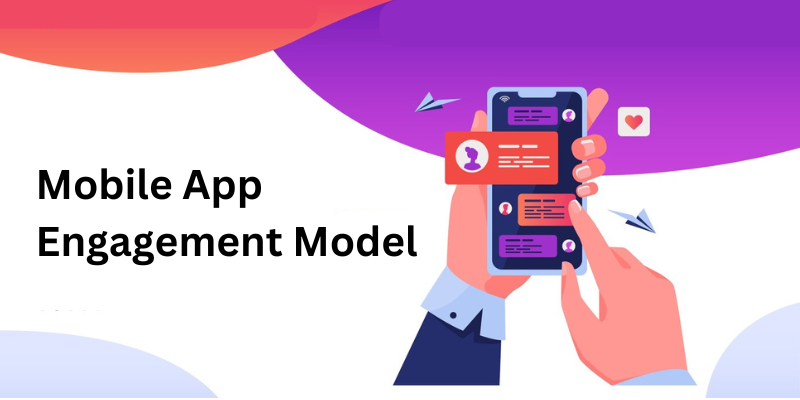Are you searching for a mobile app development company to outsource your project?
Firstly, it is imperative to know engagement models and select a suitable one so as to avoid hastily rushing into concluding on an outsourcing partner by scouring the internet.
Why?
The process of developing a mobile app is complex. It takes several teams and different technological resources to go from preliminary ideas to proper working mobile applications.
Every step in this process, from coming up with ideas through the design stage all the way down to finalizing the software, affects the cost and quality of the entire project.
Any mistake made during the course of executing your mobile application project can lead not only to unsatisfactory results but also increase its expenses.
Thus, selecting the appropriate engagement model enables one to get optimal results with minimum resource wastage while developing mobile apps.
Hence, diverse professional relationships must be comprehended before establishing which type suits best depending on project specifications.
What is an Engagement Model?
An engagement model framework depicts the specific working methodology between the user and its outsourcing firm. It mainly involves duties, tasks, rules, obligations, and engagement deadlines. It highlights the degree of control and responsibilities for the concerned partners.
All these aspects are presented as a legal contract documented in the form of writing and signed by the parties associated.
Why is an Engagement Model Important?
Developing mobile apps is a cumbersome task. It covers different functions, such as product discovery and research, app design, project management, development, business evaluation, testing and quality assurance, and finally, deployment to the application stores.
Each phase demands a strong approach and ample hours to deliver a robust outcome.
Thus, when you rely on a mobile app development company for project outsourcing, you require a list of guidelines. And the agreement would itself serve as a model of engagement. It will define roles and duties, control level, number of hours, cost, and other key elements.
Why is there a need to have a well-defined model of engagement?
This is due to the dynamic nature of the mobile app development process. You will need to pay for the creation of each feature, functionality, and modification you make to your project.
According to industry reports, inappropriate participation and poor communication are the main reasons why 16% of outsourced projects fail.
Without a written agreement, you could run into many issues, such as project oversight, budget planning, the cost of developing a mobile app, product delivery, and application quality.
Here comes the engagement model that is needed to overcome all these possible issues.
Types of Engagement Models
- Fixed-Price Model
In this simple arrangement, the client and the mobile app development company decide on a fixed cost before the project begins. Allotted funds are used to complete the app development process, and deadlines are rigorously followed.
Pros:
- Predictability: You’ll know precisely how much your project will cost from the beginning because the budget and scope are both well-defined.
- Minimal Oversight: After the details are finalized, the company assumes complete responsibility for development, allowing you to concentrate on other duties.
Cons:
- Lack of Flexibility: Modifying during development may result in more expenses or longer completion times.
- Unfit for intricate tasks: This strategy is less suitable for projects whose scope may change as they develop.
- Time and Material Model
Under this model, you pay for the resources used and the actual hours the hired mobile app developers spend. It’s widely used for projects with a projected scope that will vary or is not entirely clear.
Pros:
- Flexibility: As you work, you can modify the project’s scope, add fresh functionality, or adjust it.
- Pay for What You Use: Your final cost will show that if the project finishes early or calls for fewer resources, this fits changing projects.
Cons:
- Less Predictability: The cost of a mobile app development project might readily rise beyond first projections without a set budget.
- Higher Involvement: You will have to remain active all through the development process to control developments and guarantee the project keeps course.
- Dedicated Team Model
This is a commonly used engagement model, mainly for ongoing and big projects. Here, you can hire mobile app developers who are dedicated to working and investing time exclusively on your project under your supervision.
Pros:
- Total Control: You have direct contact with the development team, therefore facilitating speedy implementation of changes.
- Long-Term Association: Perfect for long-term projects requiring steady development or for companies needing continuous app development services is a long-term collaboration.
- Flexibility with Resources: Project needs will allow you to scale your staff either up or down, thereby matching expenses to your necessities.
Cons:
- Resource-intensive: This model is more suited for companies with technological knowledge since employees must be engaged in daily operations.
- Expensive for Short-Term Projects: Given you are paying for committed resources, the expense could not be justified for smaller or one-time initiatives.
How to Select an Accurate Engagement Model for the Project
- If the project has a defined scope and one is sure whether or not there will be any significant changes, the fixed-price model is suitable. Conversely, if your project is complicated or prone to change, the time and material model or dedicated team model would be a better fit.
- The fixed-price Model fits you if you want to be hands-off and allow the professionals to manage development. The time and material model or the dedicated team model could be of interest to you if you have to adjust and regulate all of the components regularly.
- The fixed-price model is perfect for those on a tight budget, as the cost of a mobile app development project is known. If your budget is flexible, the time and material model or dedicated team model lets you change resources as necessary but can incur more expenses.
- The fixed-price model is ideal for a short-term project with a well-defined scope since it guarantees timely and within-budget completion. If your project is ongoing or needs constant improvement, the dedicated team model lets you remain flexible and free from rigid deadlines.
- A dedicated team model provides the optimum mix of flexibility and control for long-term projects, guaranteeing that you can change course as necessary. Nevertheless, the fixed-price model provides a more affordable answer for one-off or temporary projects.
Final Thoughts
Selecting an engagement model takes into account various aspects such as project complexity, budget, and the level of supervision desired. The fixed-price model is ideal when dealing with uncomplicated projects that possess clear boundaries.
However, a time and material model allows for changes to be made as work progresses, which may suit those in need of flexibility during their undertaking. A dedicated team model provides the resources needed if one wants complete oversight of a long-term venture.
At JPLoft, we provide a broad spectrum of app development services catered to any engagement model.
Whether your project requires continuous assistance or one-time hiring of mobile app developers, we can guide you through the development process and guarantee that your app realizes its best possible performance.
Carefully weighing the advantages and disadvantages of every model will help you select the one most suited to your company’s objectives and optimize the cost of a mobile app development project from any client.
Microfiber Soft White Pillows | Pillows for Sleeping White - Set of 2 (Size - 16x24 Inches Or 40x60 cm) White
₹229.00 (as of 17 December, 2024 11:23 GMT +05:30 - More infoProduct prices and availability are accurate as of the date/time indicated and are subject to change. Any price and availability information displayed on [relevant Amazon Site(s), as applicable] at the time of purchase will apply to the purchase of this product.)Geyser Water Heater TEKCOOL 𝐋𝐈𝐌𝐈𝐓𝐄𝐃 𝐖𝐈𝐓𝐇 𝟏𝟓 𝐘𝐄𝐀𝐑𝐒 𝐖𝐀𝐑𝐑𝐀𝐍𝐓𝐘 Auto Cut Off Portable Instant Water Heater/Geyser for Kitchen, Bathroom, Office, Restaurant, Saloon & Parlor
₹1,299.00 (as of 17 December, 2024 11:23 GMT +05:30 - More infoProduct prices and availability are accurate as of the date/time indicated and are subject to change. Any price and availability information displayed on [relevant Amazon Site(s), as applicable] at the time of purchase will apply to the purchase of this product.)Lifesto Oval Shape Adhesive Mirror Sticker for Wall on Tiles Bedroom Living Room Basin Mirror Bathroom Wall Mirror Both Side Sticker Unbreakable Plastic Wall Mirror
₹139.00 (as of 17 December, 2024 11:23 GMT +05:30 - More infoProduct prices and availability are accurate as of the date/time indicated and are subject to change. Any price and availability information displayed on [relevant Amazon Site(s), as applicable] at the time of purchase will apply to the purchase of this product.)Thamada Mart® Handy Electric Heater, 400 Watts Heater, Plug-In Heater, Mini Heater, Portable Room, Office, Bedroom (Pack Of 1) (NFJ03, Indian Plug)
₹999.00 (as of 17 December, 2024 11:23 GMT +05:30 - More infoProduct prices and availability are accurate as of the date/time indicated and are subject to change. Any price and availability information displayed on [relevant Amazon Site(s), as applicable] at the time of purchase will apply to the purchase of this product.)SHAYONAM Oval Shape Adhesive Mirror Sticker for Wall on Tiles Bathroom Bedroom Living Room Basin Mirror Bathroom Wall Mirror Stickers Unbreakable Plastic Wall Mirror 20 * 30 (1) /*-
₹199.00 (as of 17 December, 2024 11:23 GMT +05:30 - More infoProduct prices and availability are accurate as of the date/time indicated and are subject to change. Any price and availability information displayed on [relevant Amazon Site(s), as applicable] at the time of purchase will apply to the purchase of this product.)Discover more from The General Post
Subscribe to get the latest posts sent to your email.





